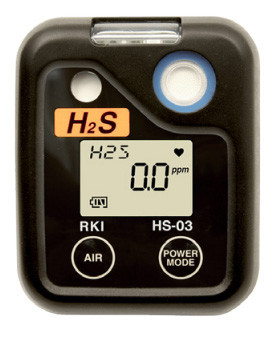Proper use and upkeep of transportable hydrogen sulfide (H2S) detectors are essential to make sure correct and reliable performance, as well as to maximize the lifespan of the equipment. Here are common guidelines on tips on how to use and keep your moveable H2S detector:

1. Read the User Manual:
Always read and completely perceive the person guide provided by the manufacturer. This will present important info on the right operation, calibration, and maintenance procedures specific to your moveable H2S detector.
2. Pre-Use Inspection:
Before every use, visually inspect the moveable H2S detector for any physical injury, loose connections, or indicators of damage. Check the sensor, display, and alarms to make sure they're functioning correctly.
three. Calibration:
Regular calibration is important for accurate readings. Follow the producer's beneficial calibration schedule and procedures. Calibration might contain exposing the sensor to a known focus of H2S or utilizing calibration gasoline.
four. Bump Testing:
Perform a bump test before every use or as recommended by the producer. A bump check entails exposing the sensor to a concentration of H2S that ought to trigger the alarm. This quick verify ensures that the detector responds appropriately.
5. Sensor Replacement:
Sensors have a limited lifespan, and their performance can degrade over time. Follow the producer's recommendations for sensor substitute intervals. If the sensor reaches the tip of its life or fails, substitute it promptly.
6. Battery Check:
Regularly verify the battery stage of your transportable H2S detector. Ensure that the battery is fully charged earlier than use. Some detectors might have indicators or alarms for low battery ranges.
7. Proper Storage:
Store your transportable H2S detector in a clean, dry, and well-ventilated area when not in use. Avoid exposing Get more info to extreme temperatures, direct sunlight, or harsh environmental circumstances that could harm the system.
eight. Use in the Correct Mode:
Some moveable detectors have different operating modes (e.g., regular mode, peak mode). Use the suitable mode for your particular utility and observe the beneficial settings on your work environment.
9. Training and Familiarization:
Ensure that customers are adequately trained on the proper operation of the transportable H2S detector. Familiarize them with the system's features, alarms, and responses to completely different concentrations of H2S.
10. Record Keeping:
Maintain a record of the detector's calibration dates, bump test outcomes, sensor replacements, and any upkeep performed. This documentation is important for regulatory compliance and inner auditing.
eleven. Responding to Alarms:
Train users on the appropriate actions to take when the detector alarms. This may include evacuation procedures, donning personal protecting tools, and in search of medical attention if needed.
12. Regular Maintenance:
Follow the producer's recommended maintenance schedule. This could include routine checks, sensor cleansing, and different preventive upkeep duties. Adhering to the maintenance schedule enhances the overall reliability of the detector.
13. Environmental Considerations:
Be conscious of the operating surroundings. Some transportable detectors may have specific environmental circumstances under which they function optimally. Follow the manufacturer's pointers to ensure accurate readings.
14. Factory Calibration:
Periodically, think about sending the moveable H2S detector to the manufacturer or an authorized service heart for manufacturing facility calibration and comprehensive upkeep.
15. Dispose of Equipment Properly:
If the transportable H2S detector reaches the end of its usable life or is broken beyond restore, observe proper disposal guidelines to make sure environmental safety.
By following these tips, you possibly can ensure that your moveable H2S detector remains dependable and correct, providing effective safety towards hydrogen sulfide exposure in various work environments. Always consult the particular person manual and guidelines offered by the manufacturer in your particular detector model..
